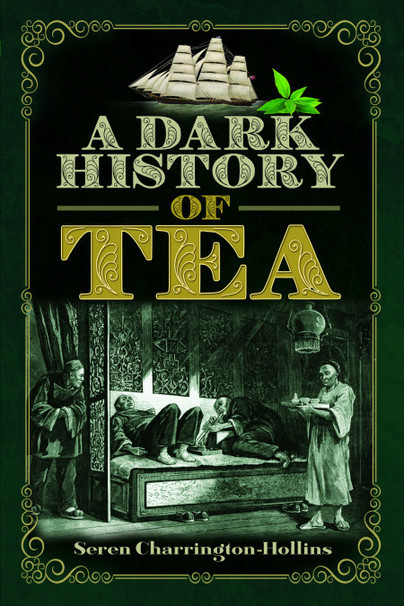Author Guest Post: Seren Charrington-Hollins
The Spellbinding Properties of Tea
As the shops fill with plastic cauldrons and trick or treat signs are abound, it seems that everyone is looking for a little magic during the Halloween season. It is certain that Halloween merchandise has become big business in the past thirty years, with costumes for children and adults alike becoming more varied and everything from spooky cocktails to cupcakes being peddled . In the midst of all the commercialism ,Halloween has lost its real magic and has been reduced to being a comedic celebration of sweet treats and things that go bump in the night.
The night of October 31st was known originally as Samhain, a Pagan festival which was used to mark the beginning of the cold winter months and symbolised the boundary between the living and the dead.
So as we approach Samhain I would like to introduce tasseography, a form of divination using tea leaves. As the veil between the living and the dead thins and opens up a temporary connection to the ‘other world’, it has always been considered the time to communicate with the dead. However, the transient energy of this period has also heralded it a wonderful time for divination.
During Halloween, fortune-telling methods using traditional Samhain symbols such as apples and nuts were consulted to seek answers about the past and destiny. Tasseography, the reading of tea leaves to reveal the future is part of a wider art of pattern reading and prophecy. We know that wise women and cunning folk have read the pattern of all kinds of botanical matter and other patterns throughout history, but in the ninteenth century the ancient Chinese practice of tasseography spread to Europe with Nomadic Gypsies and becamea popular form of divination and became a popular parlour pastime.
Part of the ritual of this form of divination is to sit down and savour the tea, allowing you to relax and gather your thoughts and if nothing else it is a perfect excuse to sit and enjoy a good cup of Rosie-Lee. You will need good quality loose tea and time to devote to this activity without distraction.
How to Begin Practising the Art of Tasseography:
For tea leaf reading, you will need:
– Some loose leaf tea
– A teapot
– A cup and saucer (pale in colour and un-patterned on the inside so the leaves (and shapes) show up well)
– A relaxed frame of mind
Brew your tea in the teapot.
Pour yourself a cup – don’t strain out the leaves, we will need these later! Enjoy your tea. Drink most of it, leaving the leaf fragments suspended in the last little sip of tea
Hold the cup in your left hand. Think of a question and fix it in your mind. Swirl the tea dregs in your cup three times anticlockwise.
Place the saucer on top of the cup, and flip the whole thing upside down so that the tea drains out into the saucer.
Turn over your cup. Look at where the leaves are, and at the patterns and shapes made. Your first thoughts on this really count, there is no right or wrong so try to trust your intuition.
Where a shape or pattern is in the cup indicates the when as in the timescale of the event or happening. Objects closer to the rim are going to happen soon (the next few days), things nearer the base of the cup are further away in the future (generally, a cup shows you the next month).
Use your creativity when you are reading your cup. You are unlikely to get an arrangement of tea leaves that looks just like an aeroplane, so close one eye and squint a bit. Let your mind drift and wander, tip the cup this way and that and let your imagination run free.
Things to Note Before you Read the Leaves:
Bubbles on the surface of your tea or coffee means that money is on its way.
If any tea leaves are floating on the surface, then visitors are imminent. The number of leaves shows how many days away they are.
If two teaspoons are accidently placed on a saucer, then you can expect news of twins soon.
If a teaspoon is placed upside down onto a saucer then you will hear news of the ill-health of a close relative.
The key to becoming accomplished at tea-leaf reading is time and practice. It is quite normal to spend time in a bewildered daze, as you stare at the tea leaves trying to see a pattern, however, it is important to remember that you must follow your intuition. You don’t need to try and see a pattern, you need to relax and allow your intuitive powers to take over.
Enjoy the process and as you delve into the ancient art of tea leaf reading you can feel that you are embracing a much more authentic Halloween tradition.

Order your copy here.

